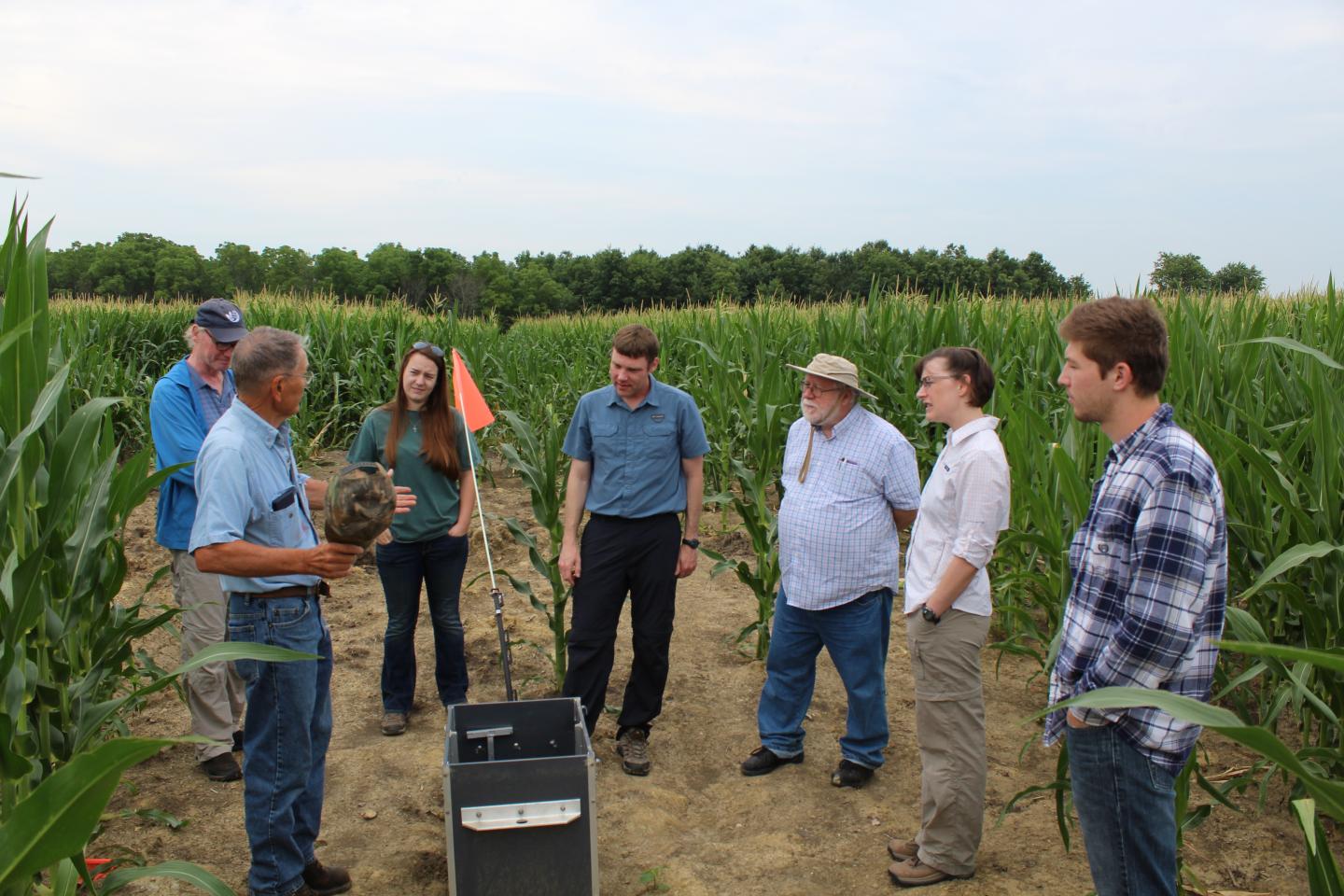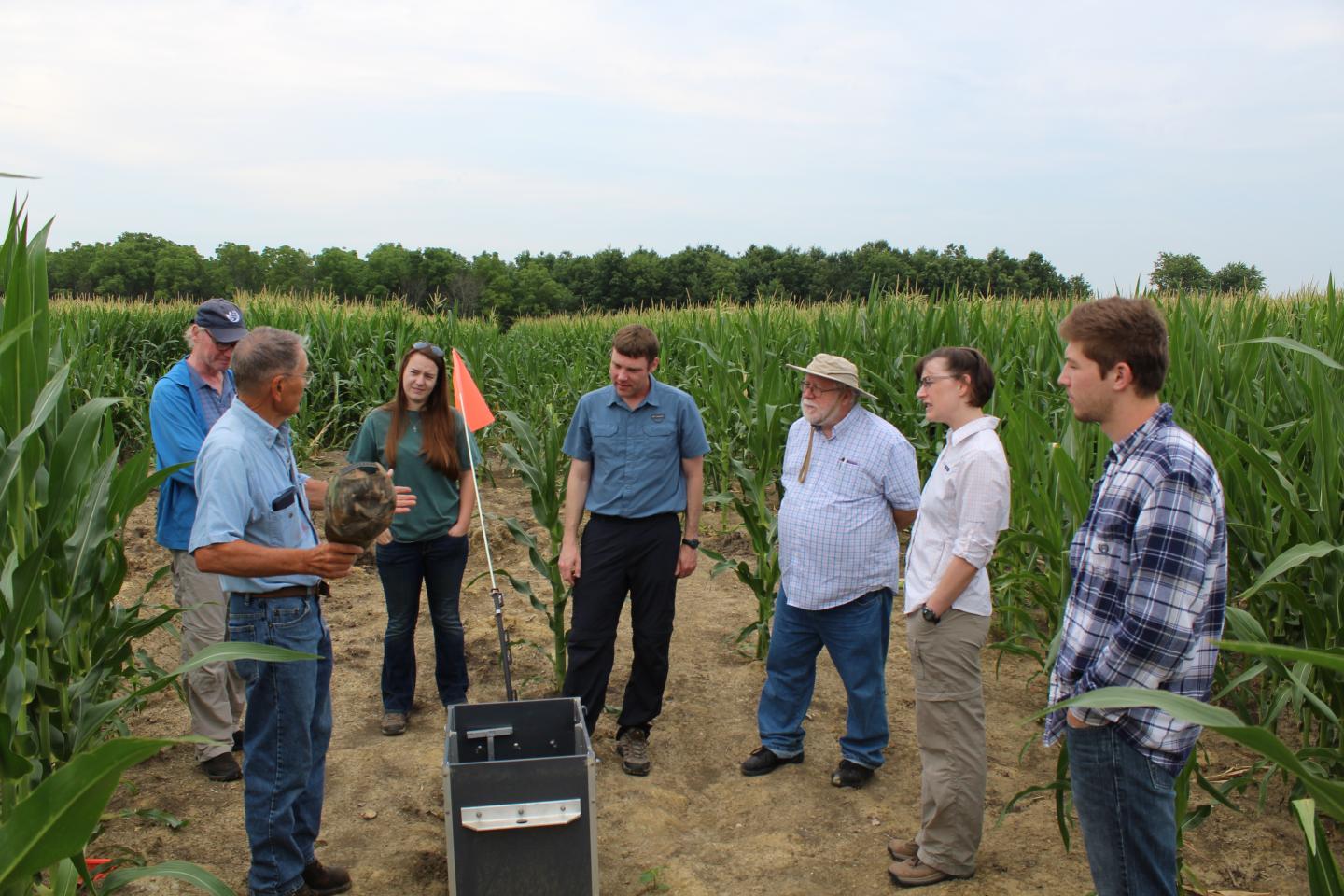
Credit: Janith Chandrasoma
URBANA, Ill. – Every summer, the Gulf of Mexico is flooded with excess nitrogen and phosphorus from wastewater treatment plants and farm fields along the Mississippi River basin. And every summer, those nutrients create a "dead zone" in the Gulf. To address the issue, the U.S. Environmental Protection Agency formed a task force and required 12 states to develop strategies to reduce agricultural runoff.
According to researchers at the University of Illinois, the strategies show promise, and leave room for the addition of certain practical elements that could help decision makers choose specific conservation practices to adopt or avoid. In a new study, the researchers examine nutrient loss reduction strategies from three upper Midwestern states to help fill the gap.
The three state strategies analyzed in the study, Illinois, Iowa, and Minnesota, included science-based assessments of various conservation practices: things like cover crops, conservation tillage, bioreactors, modifications to nitrogen application rate, and more.
"We assessed the ability of each conservation practice to be stacked or layered with others and the ability to track the implementation of each practice. This gave us some very practical information that could be used to increase adoption by focusing on those activities that are affordable, easily tracked, and effective at reducing nitrogen and phosphorus runoff. Being able to track our efforts will also aid state and federal efforts in monitoring progress towards Gulf of Mexico hypoxia goals," says Reid Christianson, lead author on the study and research assistant professor in the Department of Crop Sciences at U of I.
The researchers first compared how the three states rated the same practices in terms of their effectiveness, to come up with a consensus figure. For the most part, the ratings were similar across states. But a couple of practices stood out.
"Iowa and Illinois have very similar numbers on the cover crop front. But it's much colder in Minnesota, and they have a hard time getting cover crop seeds to germinate after corn and soybeans have been harvested," Reid says.
Woodchip bioreactors, an edge-of-field practice, were also ranked differently in the three states. The large trenches are typically filled with woodchips, housing microbes that consume excess nitrogen from drainage water. In this case, the differences were in sizing and design methodology in the three states.
Laura Christianson, co-author on the study and assistant professor in crop sciences, says, "Some practices, like cover crops, actually work differently north to south, but the other reason numbers varied is because the research was done differently in the three strategies. That represents a human decision process – critical to the state specific strategy effort."
Although the comparison between state strategies was itself novel, the researchers believe their assessment of "trackability" and "stackability" of conservation practices will be even more useful to decision makers. They drew on expert opinions to assign a trackability score to each practice. For example, conversion of land from an annual row cropping system to a woody buffer strip is highly trackable using satellite imagery. But others? Not so much.
"Thinking of an in-field practice like how much nitrogen a farmer applies; there's no reliable way to track that," Reid notes. There are ways to estimate it, but not directly track," Reid says.
"Because a farmer just decides it and does it," Laura adds. "And we have x number of farmers across Illinois and the whole Mississippi watershed. How can we track that?"
The researchers say it's important to know how trackable these practices are, because stakeholders investing in nutrient loss reduction need to be able to pinpoint what's working and what's not and be able to tell a story of improvement with the resources invested.
"We're working towards developing a framework to keep track of what all 12 states are doing, and how many practices they're adopting. It's a big undertaking," Laura says. "It's not just research for us. We're working towards coming up with something states could use for the next 20 years."
The researchers also considered how easily the practices could be paired up, or stacked.
"For example, land use change doesn't really pair with anything because you're completely changing the way business is being done. For example, if you're growing switchgrass, you don't need a cover crop or conservation tillage. It just doesn't stack well with anything. But cover crops, bioreactors, and others pair with many practices well," Laura says.
Although the researchers assessed the feasibility of stacking, they still don't know the potential effects of pairing the conservation practices. "You may have multiple practices on the same acre, but what is the resulting impact on water quality? We don't know yet – that's where we need more field research," Reid says.
The study also touched on cost effectiveness of the various practices. For example, nitrogen management – changing the amount of fertilizer applied – is one of the least expensive practices. It is also relatively easy for farmers, and is highly stackable with other practices. But Laura says it's important to consider its effectiveness and trackability, too.
"So even though it's relatively cheap, is this something we should be telling states to invest a lot of money in? It's not as effective as other practices and harder to track. With this study, we wanted to get a handle on how well the practices work, then take it a step further and ask whether the best practices are easiest or hardest to track. And, ultimately, what are farmers going to be interested in?"
###
The article, "Beyond the nutrient strategies: Common ground to accelerate agricultural water quality improvement in the upper Midwest," is published in the Journal of Environmental Management. Reid and Laura's co-authors include Gregory McIsaac, from U of I's Department of Natural Resources and Environmental Sciences, and Carol Wong, Matthew Helmers, David Mulla, and Moira McDonald. The work was supported by the Walton Family Foundation.
Media Contact
Lauren Quinn
[email protected]
217-300-2435
@ACESIllinois
http://aces.illinois.edu/
Related Journal Article
http://dx.doi.org/10.1016/j.jenvman.2017.11.051





